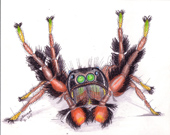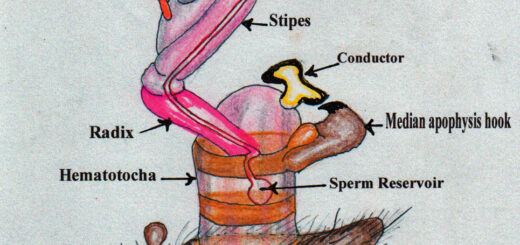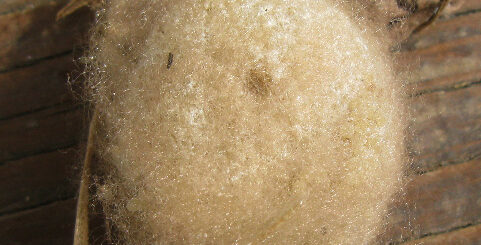Spiders. Part 2. Sex, and Spiders’ Next of kin.
Recap, from the Introduction, that spiders and their kin have no penis, thereby I like to think that these members of the Arachnids learned to reproduce on land before sex as we know it was invented.
Ancient Spider Reproduction.
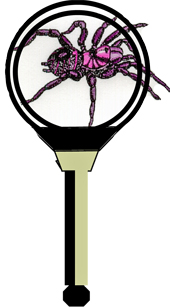
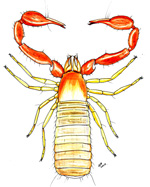
How Arachnids (spiders’ next of Kin) reproduce on land. This is a good illustration of the various methods used for sperm transfer.
Recall that spiders and their kin have no penis, thereby I like to think that these members of the Arachnids learned to reproduce on land before sex as we know it was invented.
The following post is an extract from a talk given to Naturalist Societies on Valentines Day Ha, Ha.
Let us start with the tiny Pseudoscorpion, a familiar creature of the forest floor litter. This is one of the laziest lovers in the animal kingdom. When ready to reproduce, a male will deposit a drop of sperm on the ground and leave it for the female to find and impregnate herself.
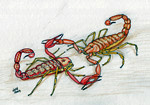
Promenade a deux Dance.
The mating ritual of scorpions.
The Scorpions, on the other hand, have a male that produces a spermatophore. This is a jelly-like stalk fixed to a solid object, on top of which is a cup containing the sperm. This cup has a lid with a trigger mechanism attached. The male, on finding a female, will sting her to subdue her, then drag her over the spermatophore until the trigger releases the sperm in a spray, thereby fertilising the female.
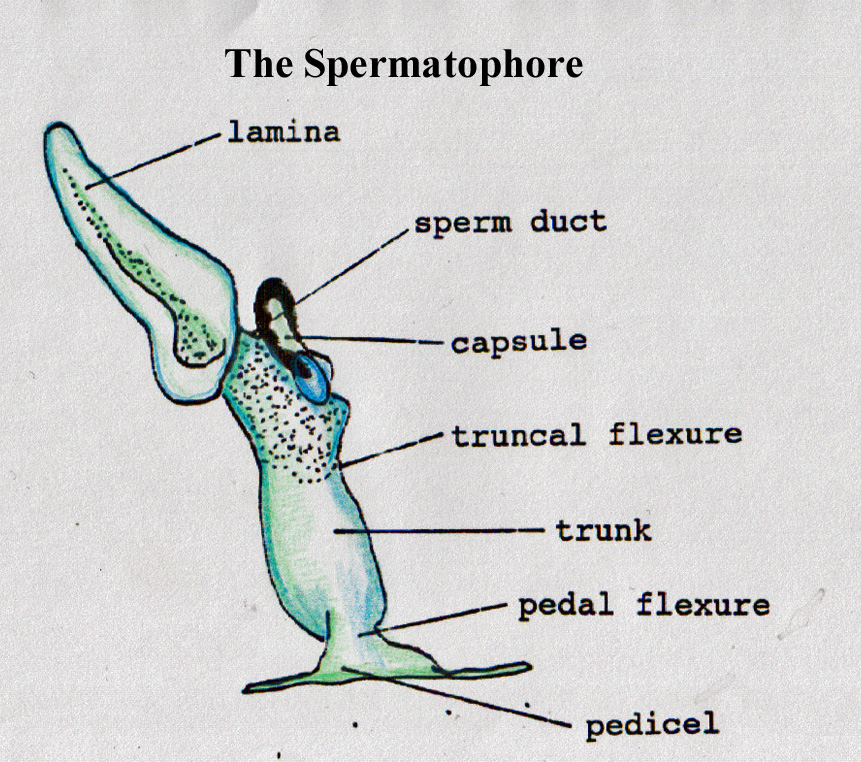
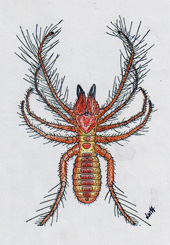
The Solifugae, or Wind Scorpions, transfer sperm as a packet deposited on the ground, then pick it up with their chelicerae. Followed by throwing the female onto her back, he places the sperm into her genital opening using the chelicerae.
As you will see from the above examples there is a progression of improvements as natural selection refines the sperm transfer.
Let us view a few of the other none-spider Arachnids.
Tailless Whip Scorpion.
Amblypygids or Tailless Whipscorpions usually have eight legs but only walk on six of them. The first pair is drawn out into a very long length and serves as a fantastic adaptation, used as antennae-like organs.
Like the true scorpions, reproduction involves the male depositing a stalked spermatophore on the ground. Again, like the scorpions, he will use his pedipalps to guide the female into position. The fertilised eggs are carried under her body. When the young hatch, they climb up onto her back to be carried around until their successive moult. If one were to fall off, she would eat it.
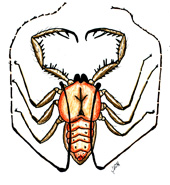
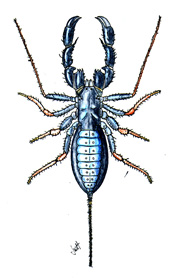
True Whip Scorpion.
The true Whip Scorpion or Vinegaroons have a tail-like whip at the rear of the abdomen and can spray a mist of vinegar-like smell of acetic acid, hence their other name. This is also found among some ants, which are capable of spraying an acid. Whip Scorpions have no venom glands like true scorpions.
Whip Scorpions also secrete a spermatophore attached to the ground. By dragging the female about by her first legs, he will manoeuvre her over it. If that does not work, he will pick up the packet of sperm with his pedipalps and insert it into her genital opening.
.
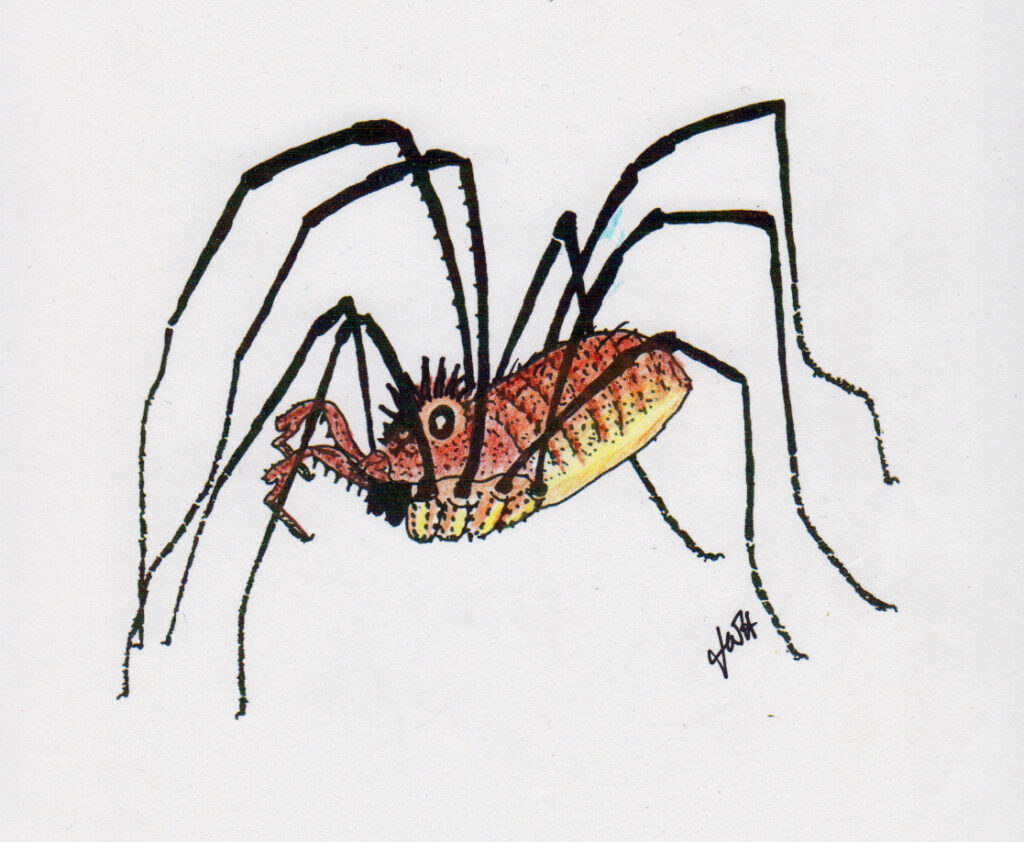
Harvestmen.
Harvestmen fossils are known to be some 400 million years old. Yet, they reproduce sexually, involving direct copulation. Some species of males offer the female a nuptial gift before mating. The female lays her eggs with the aid of an ovipositor, which can be mistaken for a penis.
In some cases, a nest is built, and the male of a particular species assumes the parental role of guarding and cleaning the eggs, often preventing the female from eating them if given the chance.
One can never make hard and fast rules as far as the animal kingdom is concerned; there is always an exception. In this case that of the harvestmen where both sexes have a penis. The male has a very long penis while the female has a very similar organ with which she deposits her eggs
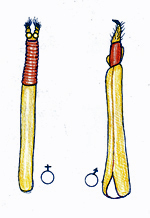

Conclusion.
In an aquatic environment like the sea, the male gametes can swim to the female’s egg.
Yet, in a dry land environment, the sperm needs to be placed inside the female’s body, where it is stored, only to be mixed with her eggs later.
Question, How is this transfer carried out?
Read-on
Enjoy reading on- JohnH.
